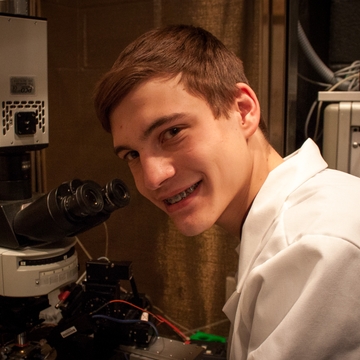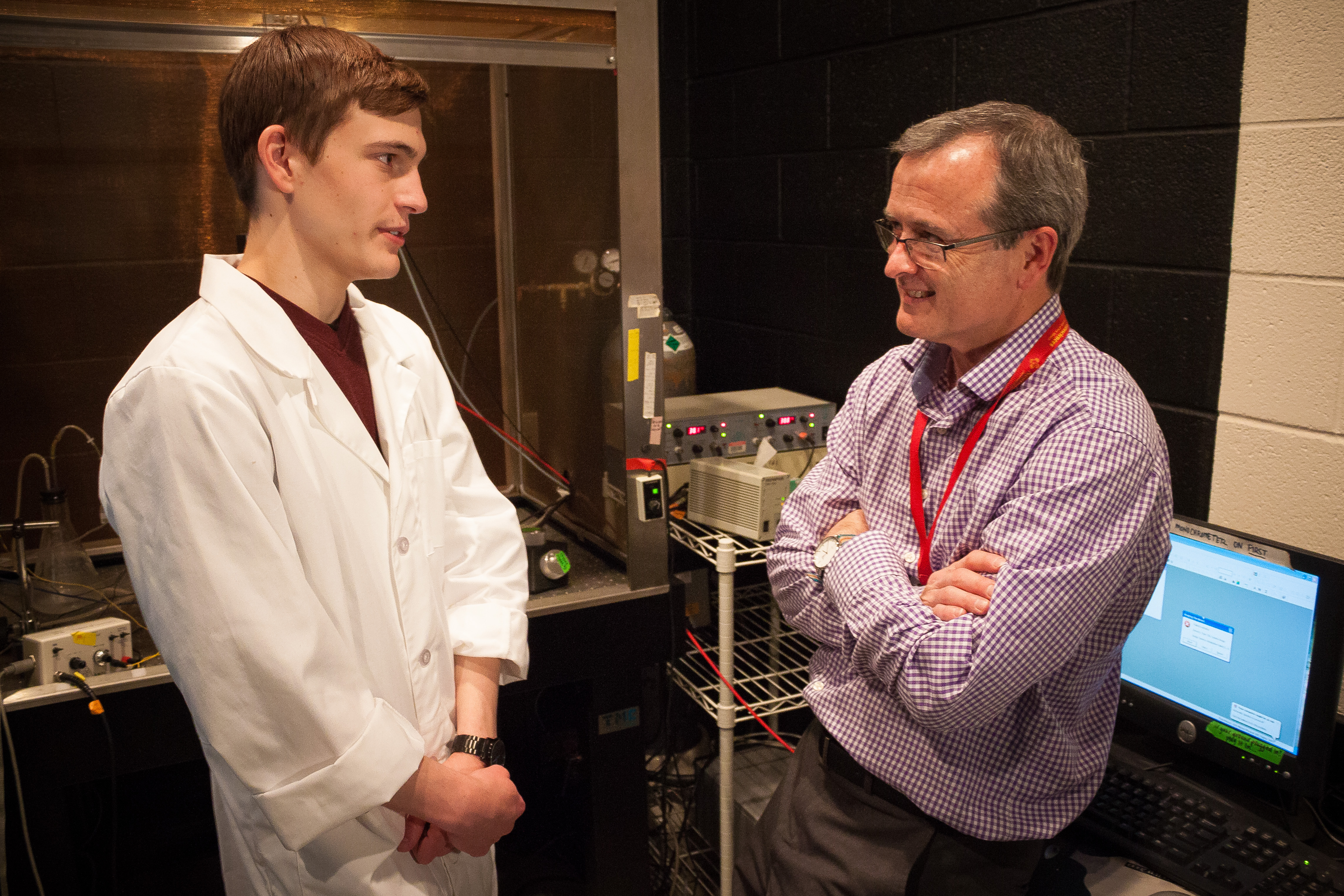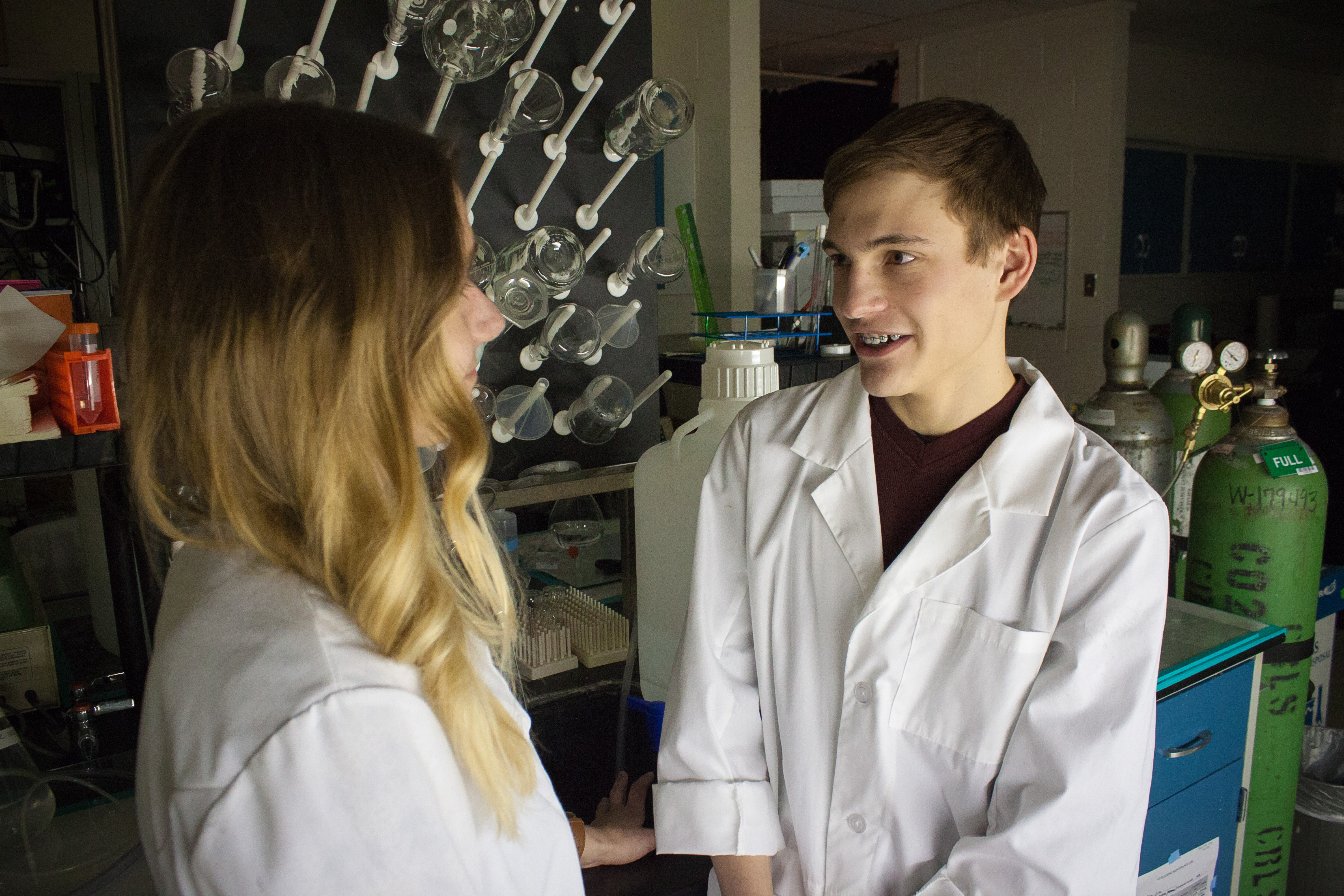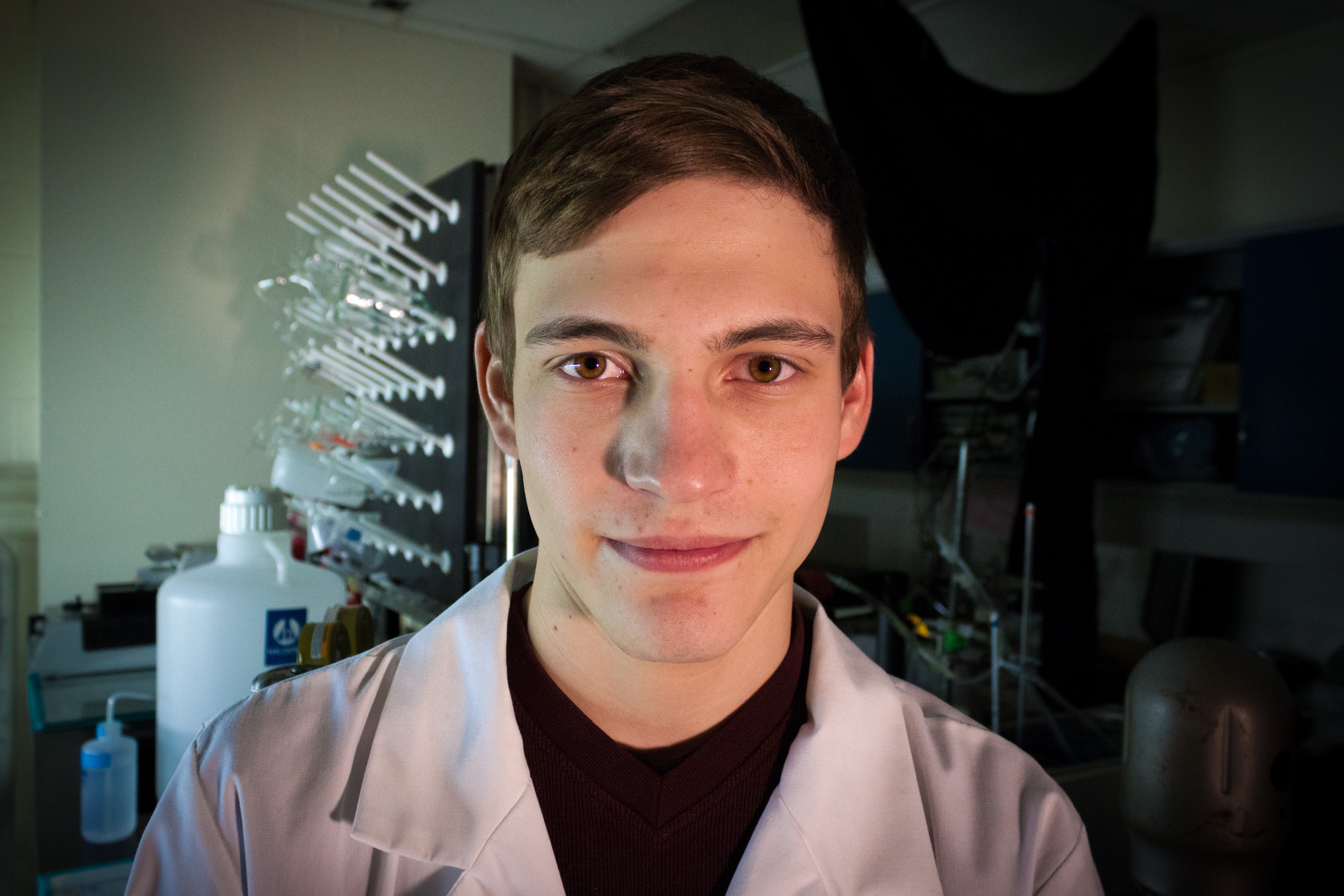
Inventive Investigator
High School Student Studies Migraine Mechanisms in UNM Neurosciences Lab
Rusty Ludwigsen's fascination with scientific exploration and innovation has been with him since childhood.
He started competing in science fairs as soon as he was able. He invented a solar-heated doghouse for a 6th grade project and has a patent pending on a device to help Parkinson's patients regain their ability to write.
These days, the high school junior is spending all of his free time in a neurosciences lab at the University of New Mexico Health Sciences Center, where he is working with a graduate student on experiments to better understand the underlying causes of migraines.
"I live in a real science-oriented family," Rusty says matter-of-factly. "My dad holds several patents. I've always wanted to have a patent, but I wasn't sure what I would patent."
Rusty's grandfather was a rocket scientist who worked on the space shuttle. His father, John Ludwigsen, is an engineer at Sandia National Laboratories, and his four older brothers all work in technical fields.
His mother, Karen Stockham, is a family and children's counselor who's used to living a household full of inventors. When the Christmas decorations come down, "My house just turns into a science lab," she says. "My sons build wind tunnels in the living room."
Rusty tends to find inspiration for his inventions when he encounters unmet needs, as when he came up with the idea for a solar-heated doghouse. "I heard the story that people commonly leave their pets outside and they freeze to death," he explains.
The assistive device for Parkinson's patients came about after he attended a local chapter of the American Institute of Aeronautics and Astronautics and encountered some older members afflicted with the characteristic tremors that commonly accompany the disease as they took notes.
"He was very concerned about those men, because he saw how intelligent they were and how much trouble they had trying to write, so he stayed up half the night coming up with a design," his mother says.
The prototype, a brace crafted from sheet metal, duct tape and furniture pads, encloses a user's wrist and anchors it to the table, dampening the tremors so the person can write. It was his entry in his 7th grade science fair.
"The next year, I moved onto actual human trials," Rusty says. He had the brace 3D printed so that it looked more professional. Then he tested the brace, which has a hinge on one side, on 30 people around the state. "It worked very well," he says. "Even though it was human trials, it was still a proof of concept that it would work on people."
That year he also started the process of patenting the idea. In ninth grade, when he submitted it for an international science fair competition, he tested his device in the motion analysis lab at UNM. "I wanted solid, tangible data," he says.
Rusty's engagement with Parkinson's patients led to his receiving an award from a local support group. One of the other guests at the awards ceremony happened to be Bill Shuttleworth, Regents' Professor in the UNM Department of Neurosciences and director of the UNM Brain & Behavioral Health Institute.
"I had a conversation with him," Shuttleworth recalls. "I was struck by several things - one was the genuineness of his interest in research."
Rusty also shared his enthusiasm for figuring out pharmaceutical mechanisms. "I thought, 'This guy is genuinely curious - this kid really wants to know how things work,'" Shuttleworth says. "I was just really taken with that."
Shuttleworth arranged for Rusty to meet some other UNM researchers. Rusty mentioned that he sometimes suffers from migraines, with symptoms serious enough to require hospitalization.
"That's when we connected on what my lab is doing," Shuttleworth says. As it happens, he is a leading expert in spreading brain depolarization, a serious condition that he often refers to as a "brain tsunami." Migraines represent one type of depolarization event, Shuttleworth says.
Shuttleworth paired Rusty with graduate student Katelyn Reinhart, who helped him learn his way around the lab. Reinhart says he's more like a fellow graduate researcher than a high school student.
"Having him in the lab has been really easy," she says. "He's really enjoyable to talk to about sciences. He's a quick learner, and he comes to me with interesting questions."
Lately, Rusty has been exploring the possibility that caffeine might increase someone's susceptibility to having a migraine, due to its chemical similarity to adenosine, a natural chemical found in the brain.
"I'm just finishing up in the lab," Rusty says. "So far, my research has shown that caffeine is most likely interfering with recovery and is not the best drug for migraines. Caffeine is a really kind of 'dirty' drug."
With such a promising start, the biggest decision Rusty faces is where to pursue his scientific interests. "One of the things I've been toying with forever is if I want to go into research or into medical school," he says. At the moment he prefers the lab because it satisfies his curiosity about how things work.
At 17, he has already been awarded a scholarship to attend the University of Arizona, "I haven't made decision yet," he says. "I think I want to study biochemistry, because that still gives me the option to go to medical school."
Photography by Jett Loe


